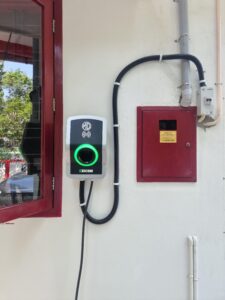How many volts is an ATV battery? If you’ve ever found yourself pondering this question, you’re in the right place. Understanding the voltage of your ATV battery is crucial for proper maintenance and troubleshooting. In this article, we will delve into the specifics of ATV batteries and provide you with the information you need to ensure optimal performance for your vehicle. So let’s dive in and explore the world of ATV batteries together!
How Many Volts is an ATV Battery
When it comes to ATVs (All-Terrain Vehicles), understanding the specifications of the battery is crucial. The battery not only powers the engine but also enables the ATV’s electrical components to function efficiently. One of the most important aspects of an ATV battery is its voltage. In this article, we will explore the topic of how many volts an ATV battery typically has, as well as delve into some pertinent subtopics related to ATV batteries.
The Standard Voltage for ATV Batteries
The majority of ATV batteries have a standard voltage of 12 volts. This 12-volt system is common in most ATVs and provides the necessary power to start the engine and support the ATV’s electrical systems, including lights, signals, and accessories. The 12-volt battery voltage is similar to the voltage used in most automobiles, making it readily available and affordable.
It’s important to note that the battery voltage may vary slightly depending on the specific make and model of the ATV. Some ATVs may require a higher voltage battery due to increased power demands or modifications, while others might utilize a lower voltage battery for specific purposes. However, the majority of ATVs on the market operate on a 12-volt battery system.
Understanding Battery Capacity and Amp-Hour Rating
In addition to voltage, another crucial factor to consider when choosing an ATV battery is its capacity, which is measured in amp-hours (Ah). The amp-hour rating indicates how much current the battery can deliver over a specific period. A higher amp-hour rating means the battery can provide power for a longer time before recharging becomes necessary.
The battery capacity required for an ATV depends on various factors, including the ATV’s power demands, usage frequency, and the number of electrical accessories it supports. Understanding the battery’s capacity is essential to ensure uninterrupted operation and avoid potential power failures while out on the trails.
Here are a few examples of common ATV battery capacities:
- A 12 Ah battery can deliver a current of 1 amp for 12 hours, or 6 amps for 2 hours.
- A 20 Ah battery can deliver a current of 1 amp for 20 hours, or 10 amps for 2 hours.
- A 30 Ah battery can deliver a current of 1 amp for 30 hours, or 15 amps for 2 hours.
It’s important to choose an ATV battery with an appropriate capacity that aligns with your specific requirements.
Factors Affecting Battery Life and Performance
Several factors can impact the life and performance of an ATV battery. Understanding these factors can help you maximize the lifespan and reliability of your ATV battery:
1. Maintenance and Care
Proper battery maintenance and care are crucial for long-lasting performance. Some essential maintenance tips include:
- Regularly inspecting the battery for any signs of damage or corrosion.
- Cleaning the battery terminals and ensuring a secure connection.
- Keeping the battery charged when not in use to prevent deep discharge.
- Avoiding overcharging the battery, as it can lead to damage.
2. Temperature
Extreme temperatures can adversely affect battery performance. It’s recommended to store and operate your ATV within the manufacturer’s specified temperature range. Extreme cold can reduce the battery’s ability to deliver power, while excessive heat can cause internal damage and shorten battery life.
3. Usage Patterns
The frequency and duration of ATV usage can impact battery life. Regularly using and recharging the battery helps maintain optimal performance. On the other hand, letting the battery sit unused for long periods can lead to self-discharge and reduced capacity.
4. Electrical Accessories
Installing additional electrical accessories, such as winches, lights, or audio systems, can increase the power demands on the battery. Ensure that your ATV’s electrical system can handle the extra load and consider upgrading to a higher-capacity battery if necessary.
Choosing the Right ATV Battery
When it comes to choosing the right ATV battery, it’s essential to consider the following factors:
1. Compatibility
Ensure that the battery you select is compatible with your ATV’s make, model, and electrical system requirements. Check the owner’s manual or consult with a knowledgeable professional to determine the correct battery specifications for your ATV.
2. Battery Type
ATV batteries are available in various types, including AGM (Absorbent Glass Mat), conventional lead-acid, and lithium-ion. Each type has its own advantages and considerations, such as maintenance requirements, weight, and cost. Evaluate these factors to choose the battery type that best suits your needs.
3. Brand Reputation
Opt for reputable battery brands known for their quality and reliability. Good brands often provide warranties, ensuring customer satisfaction and peace of mind. Additionally, reading customer reviews and seeking recommendations can help you make an informed decision.
4. Budget
Battery prices can vary depending on the brand, type, and capacity. Set a budget that aligns with your requirements and explore options within that range. Remember to prioritize long-term value and reliability over short-term savings.
Understanding the voltage and capacity of an ATV battery is crucial for selecting the right one that meets your ATV’s power requirements. Most ATVs operate on a 12-volt battery system, and the battery’s capacity, measured in amp-hours, determines its overall performance. Factors such as maintenance, temperature, usage patterns, and electrical accessories can impact the battery’s life and performance. By considering these factors and choosing a compatible battery with the right type, brand reputation, and budget, you can ensure reliable power for your ATV adventures. Remember, proper battery care and regular maintenance will help extend the lifespan of your ATV battery and keep you enjoying the trails for years to come.
Frequently Asked Questions
What is the voltage of an ATV battery?
The voltage of an ATV (All-Terrain Vehicle) battery typically ranges from 12 volts to 14 volts. Most ATV batteries are 12-volt batteries, similar to those used in cars and motorcycles.
Can I use a higher voltage battery for my ATV?
No, it is not recommended to use a higher voltage battery for your ATV. ATV electrical systems are designed to work with 12-volt batteries. Using a higher voltage battery can potentially cause damage to the ATV’s electrical components and may affect the overall performance of the vehicle.
What happens if I use a lower voltage battery for my ATV?
If you use a lower voltage battery for your ATV, it may not provide enough power to start the engine and operate the vehicle’s electrical systems. It is important to use a battery with the correct voltage to ensure proper functionality and avoid any potential issues.
How do I know the voltage of my ATV battery?
You can usually find the voltage information on the battery itself. It is typically labeled on the top or side of the battery casing. You can also refer to the ATV’s owner’s manual or consult with a knowledgeable mechanic or dealer to determine the correct voltage for your specific ATV model.
Can I replace my ATV battery with a different voltage battery?
It is recommended to replace your ATV battery with a battery of the same voltage (12 volts) to ensure compatibility and proper functioning. Using a different voltage battery can lead to electrical problems and potentially cause damage to the ATV’s electrical system.
Are there any other factors to consider when replacing an ATV battery?
In addition to the voltage, it is important to consider the dimensions, capacity, and type of battery required for your ATV. Different ATV models may have specific battery requirements, so it is advisable to consult the owner’s manual or seek guidance from a knowledgeable mechanic or dealer when selecting a replacement ATV battery.
Final Thoughts
An ATV battery typically has a voltage rating of 12 volts. This voltage is necessary to power the various electrical components and starting system of the ATV. Understanding the voltage of an ATV battery is important when it comes to maintenance and replacement. Whether you are looking to purchase a new battery or troubleshoot an electrical issue, knowing the voltage requirement is crucial. So, if you are wondering, “How many volts is an ATV battery?” the answer is generally 12 volts.



